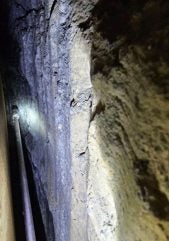
High pressure water jets are being used to clear rock from the shield of the Snowy 2.0 tunnel boring machine (TBM) Florence at Tantangara. The machine was halted on 16 May due to extremely hard and abrasive rock conditions. Specialist contractors began their work on 21 May, utilizing high-pressure water streams to break apart the obstructing rock.
The decision to stop TBM Florence’s excavation was made to prevent damage to the machine, as cutter disks wore down quickly and the rock pinched the TBM’s shield. The Snowy 2.0 team is closely monitoring the rock removal process to determine when excavation can resume. They anticipate encountering variable ground conditions as they continue to work on the headrace tunnel, which will connect Tantangara Reservoir to the Snowy 2.0 power station.
Construction updates
Located in the NSW Snowy Mountains, Snowy 2.0 is currently 57% complete, with a workforce of 3000 making substantial progress. At Lobs Hole, TBM Lady Eileen Hudson has excavated 2km of the 6km tailrace tunnel, while TBM Kirsten is set to begin work on the inclined pressure shaft. The ongoing drill and blast excavation of the power station caverns, which will be among the largest and deepest in the world at 800m underground, continues.
More than 570,000 cubic meters of material have been excavated at the Talbingo intake site. At Tantangara, the intake is just three meters from its full 55m depth, and the tunnel linking the intake and gate shaft is underway, with TBM Florence having advanced 850m into the headrace adit.
The headrace surge shaft at Marica has been excavated to a depth of 85m, with a planned depth of 250m. Meanwhile, at the Polo Flat factory in Cooma, over 104,000 concrete tunnel lining segments have been produced, along with 450 of the 7,000 bespoke segments for the Inclined Pressure Shaft.
Snowy 2.0 is a major pumped-storage hydroelectric project in Australia that will link two existing dams through 27km of tunnels and build a new underground power station. It will provide 2200MW of dispatchable, on-demand generating capacity and approximately 350,000MWh of large-scale storage to the National Electricity Market.






